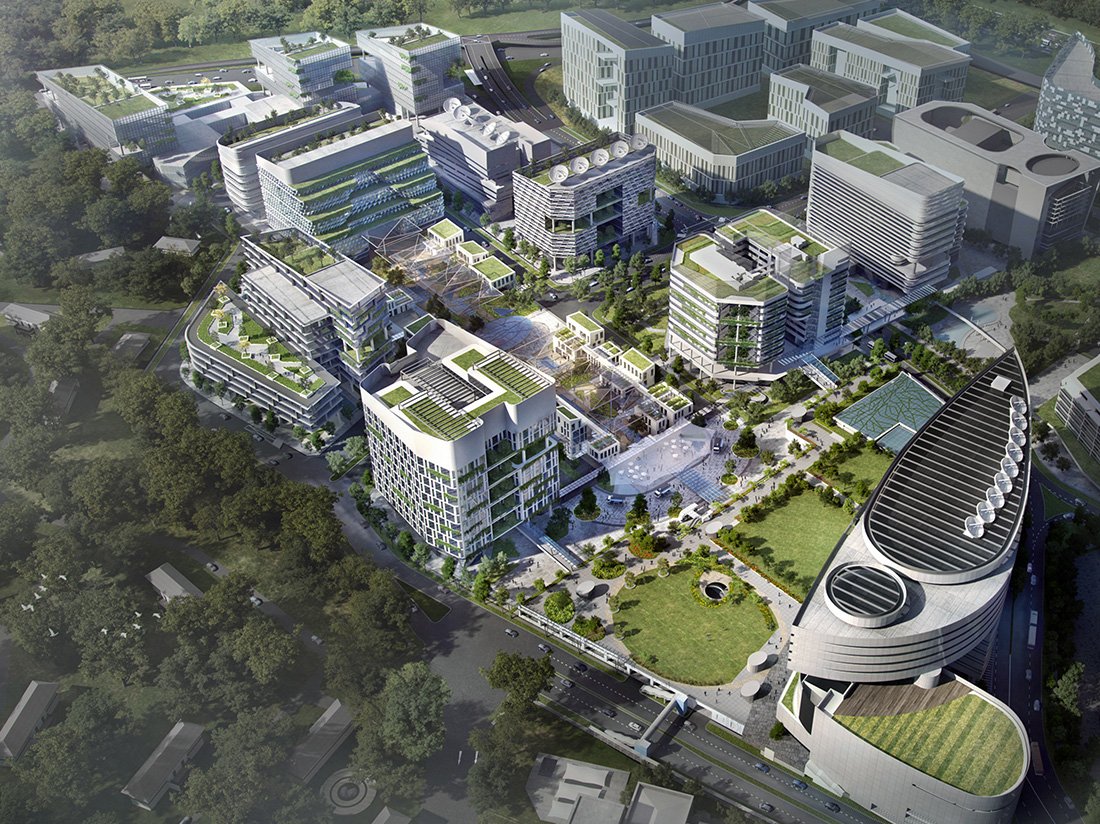The Future of Knowledge Precincts: A Data-Driven Evolution
Author: James Calder
The growth of knowledge precincts globally has followed the Silicon Valley model: a university focused on commercialisation and research, a recognisable talent-attracting location, and the intersection of government and business support. According to the Global Innovation Index 2024, regions with strong university-industry collaboration generate 3.7 times more patents and attract 2.8 times more venture capital. Innovation districts generate approximately $174 billion in annual economic output globally, with productivity rates 20-25% higher than traditional business parks.
Macquarie Park Innovation District
Australia's distinctive knowledge ecosystems include Tonsley Park (generating $1.2 billion in investment since 2012 with over 1,800 jobs), Adelaide BioMed City (accelerating clinical trials by 40%), TechCentral in Sydney (250+ startups raising $2.8 billion between 2020-2024), and Macquarie Park Innovation District (contributing $9.5 billion to Australia's GDP annually).
Since Covid, flexible working has diminished the buzz that drives successful precincts. Property Council data shows average occupancy in innovation precincts at 62% compared to pre-pandemic levels of 89%. Peak occupancy has shifted from Tuesday-Thursday to predominantly Wednesday only, with average workspace utilisation decreasing from 73% to 51%. Collaboration spaces maintain higher utilisation (68%) than individual workspaces (43%).
The next generation of precincts will provide greater space flexibility and integrate physical, digital, and community experiences dynamically. Singapore's One-North precinct implemented flexible space allocation in 2022, increasing utilisation by 31% while accommodating 22% more organisations. This requires spaces designed for varied uses with more shared facilities, using technology to automate space interactions, physical rights management with spatial web sensors allocating space as needed.
Sinapore’s One-North precinct
MIT research indicates truly flexible spaces can increase utilisation by up to 43% while reducing operational costs by 28%. AI-driven "collision engineering" delivers 32% more cross-disciplinary projects and 47% more patent applications, while organisations in flexible-space precincts experience 23% lower real estate costs while maintaining innovation outputs. The World Economic Forum projects that by 2030, adaptive innovation districts could contribute $450 billion annually to the global economy, a 158% increase from current figures.
This next generation of flexible, shared space with spatial web enhancements will unlock an exciting evolution of knowledge precincts for human endeavor.



